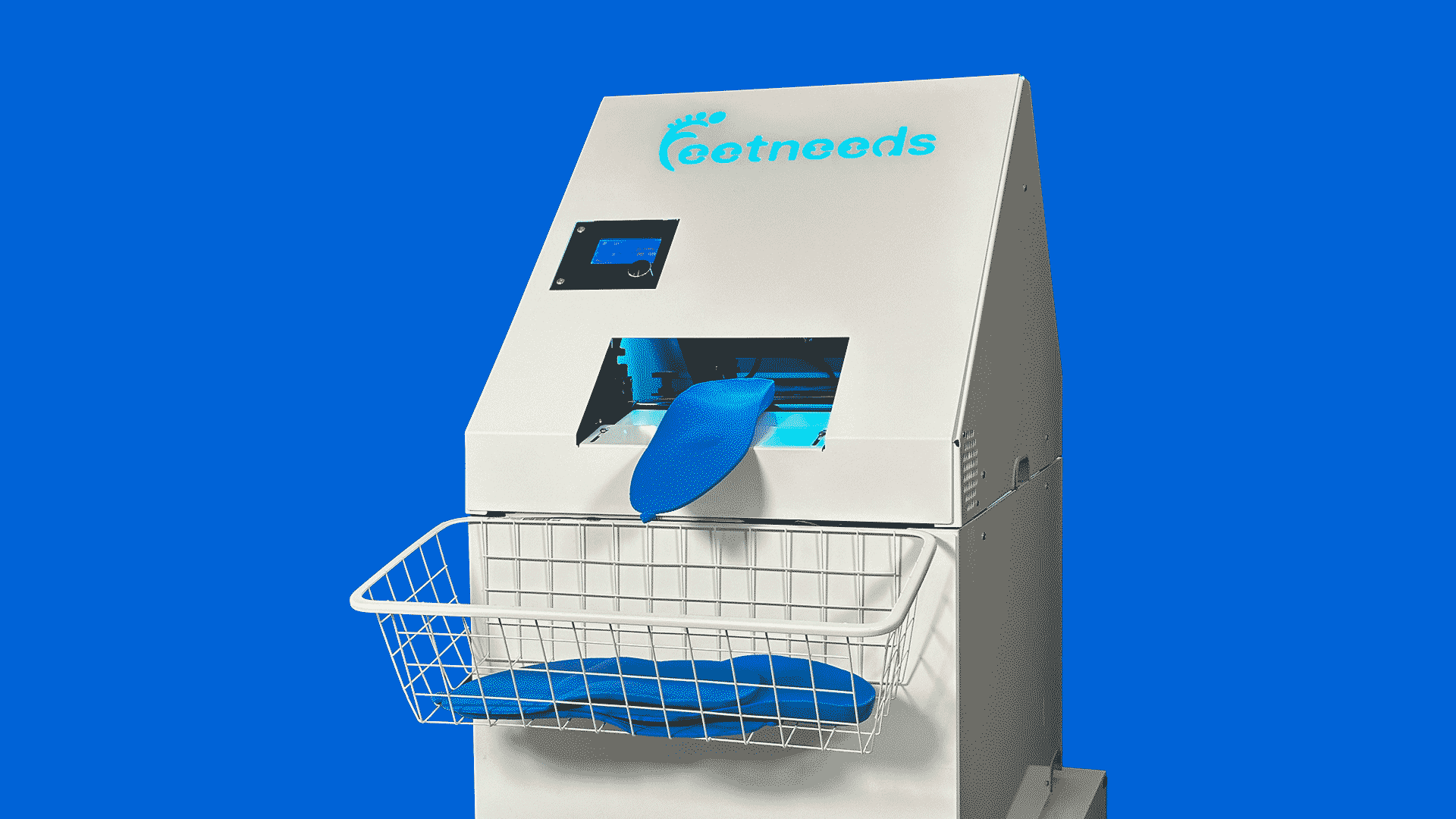
E-Commerce Fulfillment Services in the US: How It Works

The US e-commerce market is one of the most competitive in the world. After the 2024 presidential election and with ongoing shifts in the economy, online brands are facing a new set of challenges in logistics. Understanding how e-commerce fulfillment services work and how they impact your operations is key to staying competitive.
What Are E-Commerce Fulfillment Services?
E-Commerce Fulfillment is the process that ensures online orders are delivered smoothly and efficiently to customers. It includes all the steps that take place after someone places an order in an online store.
These steps typically include:
- Storing inventory
- Picking items from the warehouse
- Packing the orders
- Shipping them to customers
- Handling returns
In addition to these core tasks, fulfillment also involves:
- Managing stock levels (keeping track of what's available and what needs restocking)
- Providing shipment tracking and delivery updates
- Offering customer support related to orders, inventory, delivery, and returns
E-commerce fulfillment providers specialize in handling all of these tasks. They automate the entire order fulfillment process, making it faster and more efficient.
The E-Commerce Fulfillment Process: Step by Step
Storage:
Before an order can even be placed, products must be properly and strategically stored. Modern e-commerce fulfillment providers use digital warehouse management systems (WMS) to monitor inventory in real time and keep everything well-organized. A structured storage system saves time and prevents errors during the shipping process.That’s why people often talk about "outsourcing logistics"—because products need to be stored in a dedicated fulfillment center before they can be processed automatically. This initial storage step is the starting point of the process, and stock is continuously replenished and adjusted as needed.
- Picking:
As soon as an order is received, the correct product is located in the warehouse and retrieved efficiently—this is known as picking. Depending on the size of the warehouse and available technology, this may be done manually by staff or automatically by robots. The goal is to pick the exact right items quickly and without errors.
- Packing:
The picked items are then securely packed—using the appropriate box size, protective filling materials, and often personalized inserts like coupons or branded flyers. Shipping labels are also applied at this stage. For many brands, packaging is a key part of the customer experience, so they provide their own branded boxes. Flexible fulfillment providers like Quivo, which operate their own warehouses, routinely include these custom elements as part of their daily operations.
- Shipping:
After packing, the shipment is handed off to a carrier (e.g., DHL, DPD, or the postal service). Thanks to integrated systems, this often happens on the same day. Shipping costs, delivery speed, and tracking options are all crucial to customer satisfaction. We negotiate the best shipping rates for our e-commerce clients, significantly lowering the cost per order compared to self-shipping. We consistently maintain a 99% same-day fulfillment rate—even when processing thousands of orders per day.
- Returns Handling:
When customers return a product, the returns process begins. The fulfillment team receives the return at the warehouse, inspects the item, and decides—based on prior agreements with the retailer—whether to restock or discard it. A smooth return process builds trust in the online store and increases the likelihood of repeat purchases. At Quivo, for example, each return is documented with photos, ensuring complete traceability.
- Inventory Management:
Every movement in the warehouse—storage, shipment, return—is recorded in a centralized system that automatically updates the inventory. Retailers can monitor stock levels through the fulfillment software and avoid overselling or stockouts. Clear, simplified inventory management is essential for both revenue and customer satisfaction, and it also reduces the administrative burden on the online shop.
- Shipment Tracking:
Once the order is in transit, customers automatically receive a tracking number from the shipping carrier. Fulfillment providers ensure this information is sent and that delivery status updates are clearly communicated. This keeps shoppers informed and confident throughout the process.
- Customer Service:
If issues arise—such as delays or damaged goods—the fulfillment service often steps in or provides the online store’s support team with important information. Close coordination between logistics and customer communication makes a big difference in the overall shopping experience.
Post-Election Context and Its Impact on Logistics in 2025
Since the 2024 presidential elections, U.S. policies have significantly reshaped the economic and logistical landscape. New government directives have had major repercussions on supply chains and fulfillment operations, creating new challenges for e-commerce businesses.
The most important effects:
- Increased Import Taxes and Stricter Regulations
New tariff measures, implemented to protect the local economy and bring back certain industrial sectors, have led to a significant rise in import costs. Products from Asia or Europe now face higher customs duties and stricter controls (compliance verification, customs certifications). This complicates logistics flows and necessitates more precise planning to avoid delays and additional costs.
- Transportation Cost Fluctuations and Geopolitical Tensions
Trade tensions between the U.S. and certain strategic partners (notably in Asia and Eastern Europe) have caused volatility in international and domestic transportation prices. Fuel costs are also under pressure due to new energy policies and geopolitical tensions. As a result, carriers are passing these increases onto their rates, directly impacting fulfillment costs.
- Labor Shortages in Certain Regions
With immigration reforms and decreased attractiveness of certain logistics jobs, several key states (like California, Texas, or Florida) face labor shortages in warehouses and sorting centers. This situation increases processing times and challenges 3PLs' ability to meet strict SLAs (24-hour shipping, quick returns).
- Increased Pressure on Delivery Times and Carrier Reliability
In this unstable context, consumers no longer tolerate delays. The promise of fast delivery (1 to 2 days) remains the norm but is increasingly difficult to uphold. Carriers are under strain, and last-minute delays (driver shortages, port congestion) are becoming more frequent.
Key Fulfillment Trends in the US
Accelerated Delivery and National Network Expansion
American consumers expect ultra-fast delivery times (1 to 2 days). E-commerce fulfillment providers are expanding their national warehouse networks to meet rising consumer expectations.
Distributed Fulfillment and Intelligent Automation
Distributed inventory management is increasingly handled by specialized fulfillment companies in the US, leveraging automation for accuracy and speed.
Cost Control and Flexible Contracts
Many fulfillment companies now offer on-demand models with no fixed minimums, giving brands flexibility. This allows them to adapt logistics to seasonal peaks.
- Simplified Returns and Post-Purchase Experience
Returns management is crucial for customer retention. Consumers expect smooth returns with prepaid labels, local drop-off points, and prompt refunds. This is a key differentiator among fulfillment services in the US.
- For more insights into broader e-commerce logistics, read our full article on the most important fulfillment trends of 2025.
Success Stories from Fulfillment Clients
What Brands Expect from E-Commerce Fulfillment Services
Today’s ecommerce brands expect much more from fulfillment partners than simple warehousing. They are looking for seamless integrations, real time insights, and scalable solutions that can perform reliably even under pressure.
Seamless Integration with Shopify, WooCommerce, Amazon, and Other Platforms
Brands demand direct and smooth connectivity between their ecommerce platform and logistics provider. Seamless integration ensures automatic synchronization of orders, inventory, and tracking, reducing errors, delays, and manual effort.
Real Time Visibility into Inventory and Shipments (Dashboards and APIs)
Clear dashboards and powerful APIs give brands full visibility into every stage of the fulfillment process. Access to real time data helps them anticipate inventory needs, improve operations, and deliver a better customer experience.
Defined Service Level Agreements and Guaranteed Delivery Times
Brands expect fulfillment partners to commit to clear service level agreements such as fast order processing, on time delivery, and low error rates. These standards are essential for customer satisfaction and brand reputation.
Custom Packaging Options That Strengthen Brand Identity
Packaging is not just about protecting products—it is a branding opportunity. US brands value custom packaging, branded labels, and marketing inserts that create a memorable unboxing experience and reinforce brand identity.
Scalability to Handle Volume Spikes Without Losing Quality
During high demand periods such as holidays, promotions, or product launches, brands need a fulfillment partner that can scale quickly while maintaining accuracy, speed, and service quality.

Entering the US Market: Fulfillment Tips for European and Asian Brands
For European or Asian brands expanding into the United States, choosing the right ecommerce fulfillment company is critical. Look for US-based partners that provide nationwide coverage and integrate effortlessly with platforms like Shopify, WooCommerce, and Amazon.
Here are our top recommendations for building a successful fulfillment strategy in the US:
Store Part of Your Inventory in the US to Speed Up Delivery
Maintaining local stock significantly shortens delivery times, improves customer satisfaction, and helps you stay competitive with domestic brands.
Work with a Local Partner That Offers Nationwide Reach and Omnichannel Integration
Choose a fulfillment provider with a robust US network and seamless integration capabilities across major ecommerce platforms. This ensures smoother order management and reliable shipping across all your sales channels.
Provide English-Speaking Support and Easy Returns Through a Local Warehouse
American customers expect accessible, English-speaking customer service and a simple return process. Having a local warehouse for returns builds trust and delivers a smoother post-purchase experience.
By following these best practices, international brands can greatly increase their chances of success in the US market—ensuring a smooth, efficient, and scalable expansion.
- At Quivo, we differentiate ourselves from other fulfillment services in the US by delivering customized solutions that meet the evolving demands of today’s ecommerce logistics. Let’s talk about how we can support your fulfillment strategy!
Sources
2025 State of American E-commerce Report
digitalcommerce360.com
E-commerce Fulfillment Services Market Trends Analysis Report 2025-2030
globenewswire.com
E-Commerce Fulfillment Trends to Drive Brand Growth in the Final Half of 2025
komardistribution.com
Image Sources: Canva, Pixabay, Quivo © 2025















